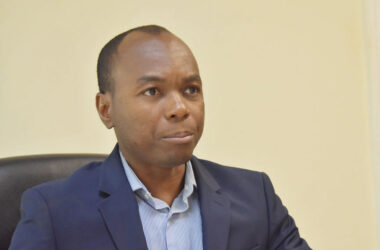
Saint Lucia is poised to experience above average growth rates in the near term as tourism rebounds, however, the high debt level and composition of debt portfolio present significant macro-fiscal risks.
This much was indicated by the Governor of the Eastern Caribbean Central Bank (ECCB) Timothy Antoine during a presentation at a press conference on Wednesday.
Antoine who was in Saint Lucia as part of his Country Outreach Missions, further indicated that global growth which had started to recover from the COVID-19 pandemic, slowed down due to rising inflation, the war in Ukraine, and related sanctions.
These geopolitical developments present threats as well as opportunities for the fiscal and economic recovery of the ECCU (Eastern Caribbean Currency Union) member countries, Antoine explained.
Antoine, in his presentation, noted that accelerating economic transformation requires a multi-pronged approach underpinned by a strong fiscal position. The region, he stated, faces a highly complex policy environment.
According to him, ongoing supply chain disruptions have increased both the cost of living and the cost of doing business; higher inflation is eroding the purchasing power of residents and placing vulnerable households and businesses at greater risk; relatively low vaccination rates are increasing public health risks and threaten the pace of economic recovery; major central banks in advanced economies have increased key policy rates making financing more expensive and could divert resources away from the region.
“We’re happy to be back in Saint Lucia after two and a half years and the reason why we were not here of course is because of the pandemic. This is always an opportunity for us to update Saint Lucia on what is going on in the Currency Union and what we see in Saint Lucia. (It is) also an opportunity for us to listen to better understand the issues and how the Central Bank can help the Government of Saint Lucia as we grapple and address the challenges before us,” he said.
Noting the effects of inflation on large and small countries, the governor stated that “the consensus is that the major central banks must do whatever it takes to get inflation under control. That means raising interest rates and ultimately that could mean a recession. I’m not here to confirm that there will be (a recession) but there is the possibility that the recession may occur as a result of the efforts of our central banks globally to try to address the issue of inflation.”
The ECCB, however, can do nothing about the matter. Antoine made this clear from the get-go, indicating that it is a stark reality. According to him, “the fact of the matter is that in the ECCU (and) Saint Lucia we import inflation principally from the United States but also from Europe or major trading partners. There’s nothing that our central bank could do about inflation per say. We are not raising interest rates …but we also talked about some of the things that we at the Central Bank are doing to help.”
Senior Economist in the Research, Statistics and Data Analytics Department at the ECCB Beverly Lugay, in her presentation, noted that Saint Lucia’s debt level is the highest in the region and that significant effort is required to achieve the debt target.
“(There are) a number of factors; one being the level of economic growth. The economy is not growing sufficiently enough to cause the debt to GDP ratio to decline substantially. There is a target at the ECCB; the monetary council agreed to reducing the debt to 60% by 2035,” Lugay said.
She also said that Saint Lucia’s nonperforming loans (NPL) ratio had increased from 2020, mirroring the impact of the pandemic on households and businesses. The Capital Adequacy Ratio, however, remains strong.
“The banking sector is very stable although there was an increase in NPL’s. We expect to see a little increase in the NPL’s in 2022, but the Capital Adequacy Ratio of the commercial banks remain very strong, above the ECCU benchmark of eight percent,” Lugay said.
“As you may have been aware we had a loan moratoria programme that assisted persons during the pandemic who were not able to service their loans. There may be persons who (are) still unemployed and may not be able to service their loans so we may see a slight increase in NPL’s in 2022, but we note that the system is highly liquid,” she added.
Lugay touched on a number of other subjects including youth unemployment which currently stands at 31.2 percent, and the effects of the pandemic on government. According to her, “in terms of public health care services there was an increase in spending. In terms of supporting those who were laid off during the pandemic (there was) a lot of unemployment support; government expended quite a bit. The overall balance of government worsened… as the economy started to recover, we saw a slight improvement.”
On the economy growing below its potential, Lugay said “In 2020 the economy contracted by 24.4 percent. There was recovery in 2021. The economy grew by 12.2 percent and the main drivers of that economic growth in 2021 were the following: accommodation and food services; the tourism sector grew by 66.8 percent; that was supported by transportation and storage. Construction grew by 20 percent. What we have observed is that over the years, over some periods, the economy grew below its potential and that can be characterized by the high unemployment rate which means that there is a lot of unused capacity in the economy.”














